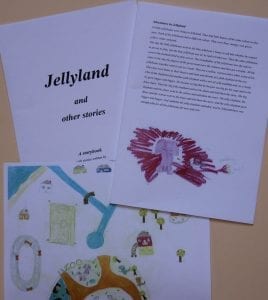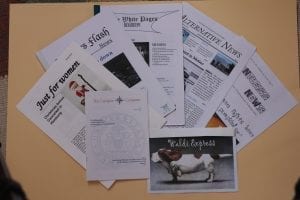… the year in which people around the globe remember the original impuls of Waldorf pedagogy which was brought down to earth 100 years ago, when Emil Molt and Rudolf Steiner founded the first Waldorf school in Stuttgart, in 1919. In this context, I see it as a special task to go back to the original impuls, work with the basics in order to understand this impuls and generate ideas how to implement it in our teaching. Only on the basis of such an understanding, we can welcome development and change.
In times of rapid development, a certain continuity, especially in the field of education, generates security and therefore seems to be adequate for the development of children and young adults. However, we cannot ignore that the world around us is constantly changing. From an educational point of view, especially modern media are confronting us with many chances, questions and challenges.

By starting elewa 2 years ago, we took the clear position that digital media and the Internet can play a valuable role in the field of professional education. A growing number of participants shows us that we are not alone with this view.

Now we have come to the conclusion that an online platform should not only rely on oral recommendations and printed flyers, but should also use the Internet and social media to become known, distribute its programme and share its vision. Therefore, we have created an „E-learning Waldorf“ facebook page. We very much hope that those of you who use facebook for communication will support us in spreading our ideas and hence contribute to a growing elewa community.

In the course “Media usage and media literacy in FLL”, which just went online, we also tackle the topic of media in Waldorf teaching. Based on the question of how we can contribute to young people’s media literacy in accordance with our Waldorf pedagogical aims, we investigate the usage of various analogue and digital media as part of creative, sustainable language teaching and learning.

In the field of foreign languages, a huge diversity of analogue and digital educational media is on offer. Consequently, a critical view and clear criteria as to whether or not to use media in the classroom seem especially important. Taking a holistic view on classes 1 to 12, we will introduce possibilities of how to integrate analogue and digital media in FLL in meaningful ways. We show how a culture of lively storytelling in the lower classes forms the basis for news paper analysis or film projects with young adults in classes 11 and 12, thus reflecting the connection between ‘analogue’ foundations and the use of digital media in the upper grades.
 We are convinced that in the context of a holistic media concept within a school, creative and authentic foreign language lessons in all classes can contribute to pupils’ media literacy in meaningful ways. Media literacy in this sense can be defined as getting to know, investigating and understanding, analysing effects and developing the ability to create and use media in healthy and adequate ways.
We are convinced that in the context of a holistic media concept within a school, creative and authentic foreign language lessons in all classes can contribute to pupils’ media literacy in meaningful ways. Media literacy in this sense can be defined as getting to know, investigating and understanding, analysing effects and developing the ability to create and use media in healthy and adequate ways.
I hope that I will meet many of you in the course (or on facebook;) and as always I am already looking forward to your feedback!
With best wishes for an interesting 2019!
Ulrike Sievers